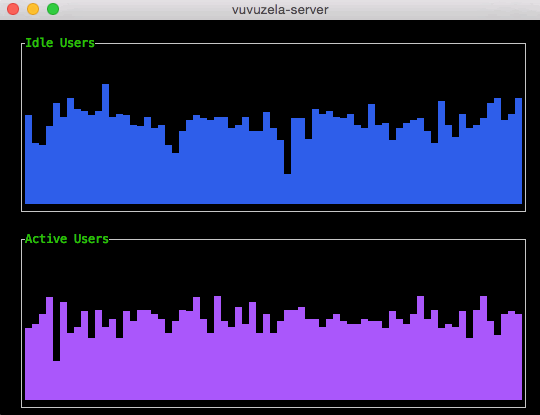Vuvuzela is a messaging system that protects the privacy of message contents and message metadata. Users communicating through Vuvuzela do not reveal who they are talking to, even in the presence of powerful nation-state adversaries. Our
SOSP 2015 paper explains the system, its threat model, performance, limitations, and more. Our
SOSP 2015 slides give a more graphical overview of the system.
Vuvuzela is the first system that provides strong metadata privacy while scaling to millions of users. Previous systems that hide metadata using Tor (such as
Pond ) are prone to traffic analysis attacks. Systems that encrypt metadata using techniques like DC-nets and PIR don't scale beyond thousands of users.
Vuvuzela uses efficient cryptography (
NaCl ) to hide as much metadata as possible and adds noise to metadata that can't be encrypted efficiently. This approach provides less privacy than encrypting all of the metadata, but it enables Vuvuzela to support millions of users. Nonetheless, Vuvuzela adds enough noise to thwart adversaries like the NSA and guarantees
differential privacy for users' metadata.
A conversation in the Vuvuzela client In practice, the message latency would be around 20s to 40s, depending on security parameters and the number of users connected to the system.
Noise generated by the Vuvuzela servers Vuvuzela is unable to encrypt two kinds of metadata: the number of idle users (connected users without a conversation partner) and the number of active users (users engaged in a conversation). Without noise, a sophisticated adversary could use this metadata to learn who is talking to who. However, the Vuvuzela servers generate noise that perturbs this metadata so that it is difficult to exploit.
Usage Follow these steps to run the Vuvuzela system locally using the provided sample configs.
- Install Vuvuzela (assuming
GOPATH=~/go , requires Go 1.4 or later):
$ go get github.com/davidlazar/vuvuzela/...
The remaining steps assume PATH contains ~/go/bin and that the current working directory is ~/go/src/github.com/davidlazar/vuvuzela .
- Start the last Vuvuzela server:
$ vuvuzela-server -conf confs/local-last.conf
- Start the middle server (in a new shell):
$ vuvuzela-server -conf confs/local-middle.conf
- Start the first server (in a new shell):
$ vuvuzela-server -conf confs/local-first.conf
- Start the entry server (in a new shell):
$ vuvuzela-entry-server -wait 1s
- Run the Vuvuzela client:
$ vuvuzela-client -conf confs/alice.conf
The client supports these commands:
-
/dial <user> to dial another user -
/talk <user> to start a conversation -
/talk <yourself> to end a conversation
Deployment considerations This Vuvuzela implementation is not ready for wide-use deployment. In particular, we haven't yet implemented these crucial components:
- Public Key Infrastructure : Vuvuzela assumes the existence of a PKI in which users can privately learn each others public keys. This implementation uses
pki.conf as a placeholder until we integrate a real PKI.
- CDN to distribute dialing dead drops :Vuvuzela's dialing protocol (used to initiate conversations) uses a lot of server bandwidth. To make dialing practical, Vuvuzela should use a CDN or BitTorrent to distribute the dialing dead drops.
There is a lot more interesting work to do. See the
issue tracker for more information.
 0Day to Buy
0Day to Buy





















